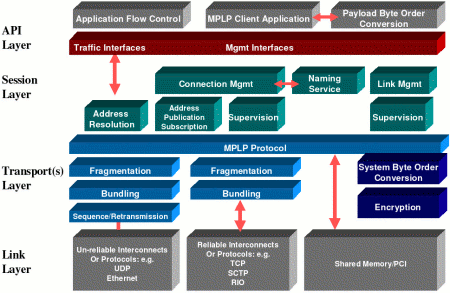Linux gains scalable open source IPC software
Mar 13, 2006 — by LinuxDevices Staff — from the LinuxDevices Archive — 30 viewsNumber two telecom OS provider Enea will release its direct, asynchronous message-passing software for distributed systems under an open source license in June. Described as the “cornerstone” of Enea's telecom RTOSes, the “Linx” IPC (inter-process communications) software scales better than other freely available IPC technologies, such as TIPC (transparent IPC) and Unix sockets, Enea claims.
Enea describes Linx as “transparent,” meaning that software processes distributed across various interconnected, heterogeneous systems can communicate as if they were running on the same processor. Such transparency simplifies application development, the company says, and allows scalability through hardware additions, without requiring application code changes.
Linx is based on IPC technology originally developed for Enea's OSE and OSEck (DSP) RTOSes (real-time operating systems), which were designed explicitly for distributed, heterogenous telecom applications. IPC technology “has always been the cornerstone of OSE,” Enea says.

Linx's “message passing link protocol” (MPLP) supports a variety of reliable and unreliable interconnects, as well as shared memory
(Click to enlarge)
Enea hopes that by releasing Linx under an open source license and hosting it on a site such as SourceForge, the software can become a “standard framework” for integrating applications from multiple vendors. Among other benefits, this would also create opportunities for Enea's own highly Linx-compatible products, such as its recently enhanced in-memory database and high-availability middleware, not to mention its professional services team.
Other open-source IPC options
Linx is not the only IPC software available under an open source license, however. Other alternatives noted by Enea include TCP/UDP/sockets (transmission control protocol/universal datagram protocol), and TIPC, which was developed by another telecom specialist, Ericsson.
Enea says that compared with Unix sockets, Linx offers a better addressing model (more transparency), a better interconnect adaption model, and much better performance — about 90 percent faster intra-node (same system) performance, and 50 percent faster internode performance, when benchmarked on Linux.
Compared with TIPC, Linx's performance advantage is smaller — between 10 and 25 percent, according to Enea's benchmarks. But, Linx still offers compelling advantages, Enea asserts.
Linx has a smaller footprint than TIPC, both in terms of code and data size, allowing it to scale down into more deeply embedded systems, including the DSP-based systems commonly found in the data plans of telecommunications systems. Linx may also scale better to large systems, Enea says, because unlike TIPC, it does not require each node to maintain a complete address map.
Mike Christofferson, director of product management, explains, “Linx supports any topology — clusters, gateways, bridges to other subsystems, and so on. Regardless of topology, the addressing model scales to adapt. It scales much better [than TIPC] to thousand-plus node systems, because under TIPC, each node has to maintain connection info to all the rest.”
Christofferson adds, “Previously, no single model for IPC was available that scales well from low to high.”
Linux IPC war brewing?
Enea was among the first telecom OS providers to market IPC interoperability with Linux. Competitor and telecom OS marketshare leader Wind River offered TIPC-based Linux IPC capabilities some time later, and has subsequently emerged as a staunch TIPC supporter.
It certainly seems possible that a standards war could be brewing between Wind River/TIPC, on the one hand, and Enea/Linx on the other.
Availability
Linx will be released in June of 2006, although an evaluation release is available now, Enea says. It will be freely licensed for Linux, but will remain under a commercial license for OSE. It is expected to be ported to other OSes in time, and is expected to support a wide variety of processor architectures, Enea says.
This article was originally published on LinuxDevices.com and has been donated to the open source community by QuinStreet Inc. Please visit LinuxToday.com for up-to-date news and articles about Linux and open source.